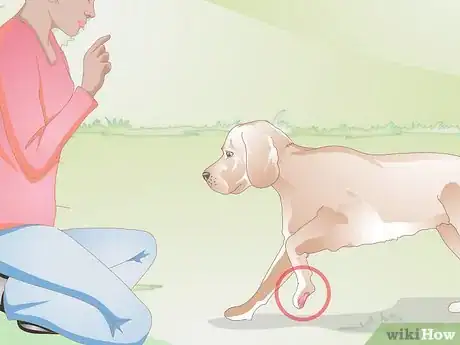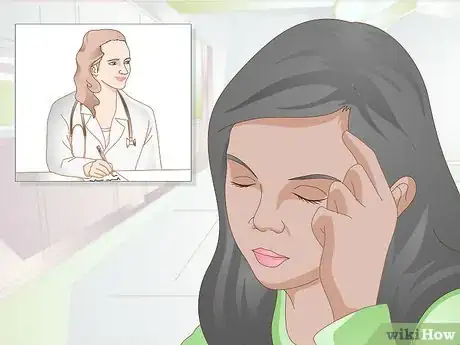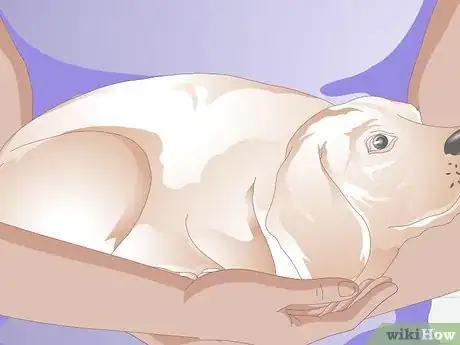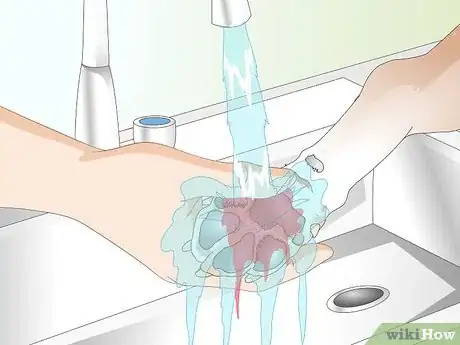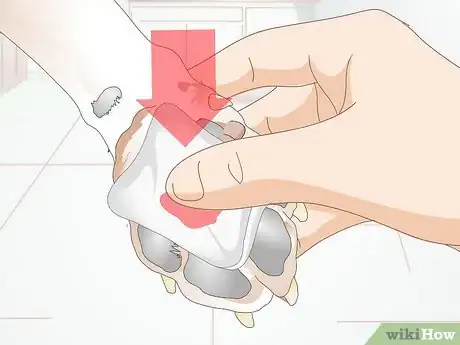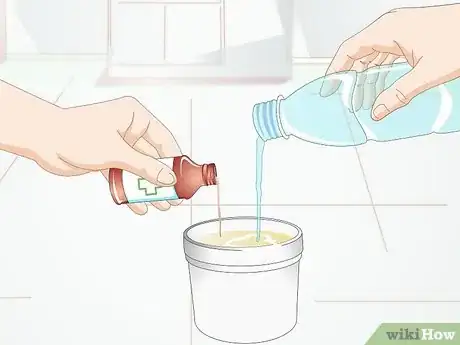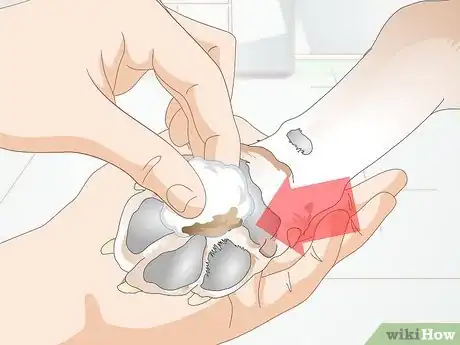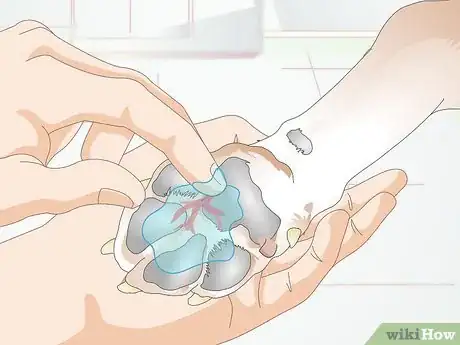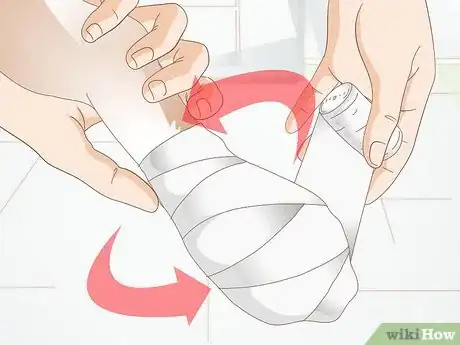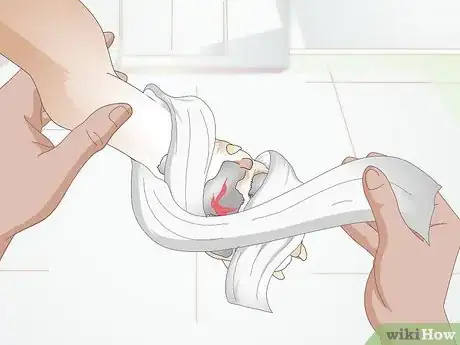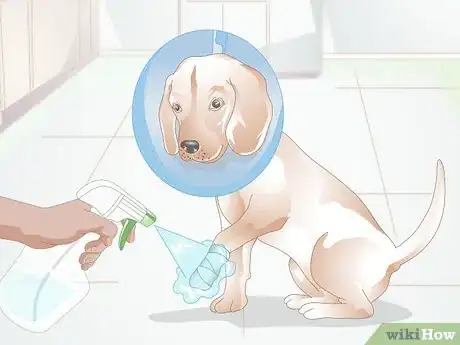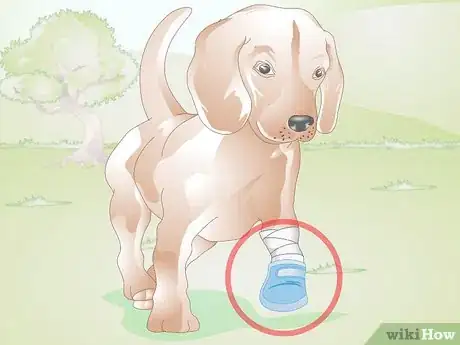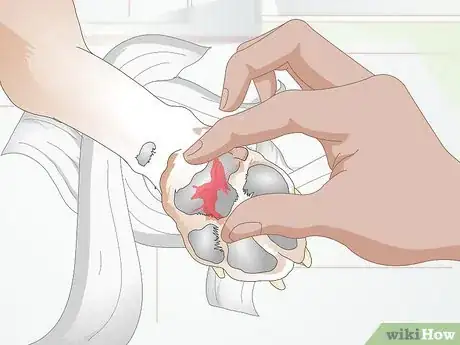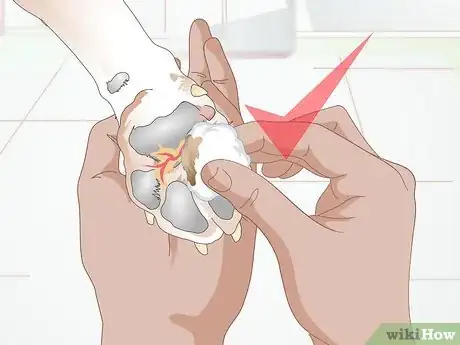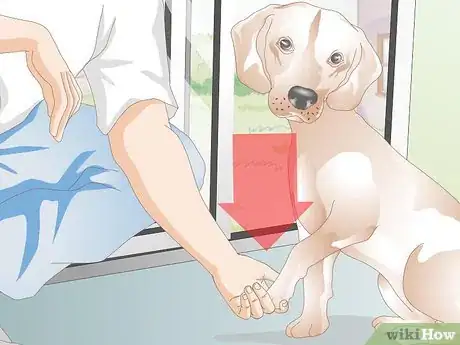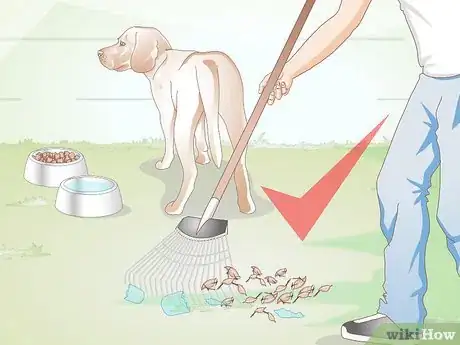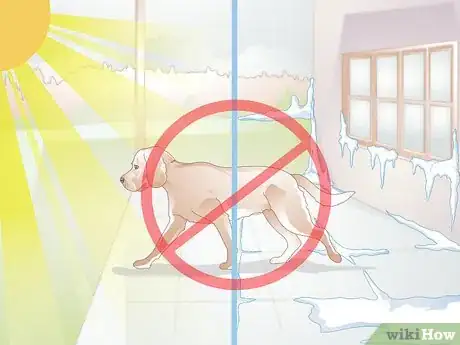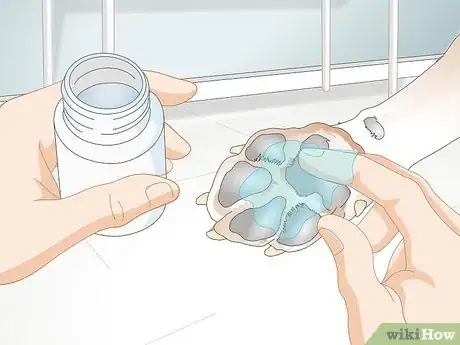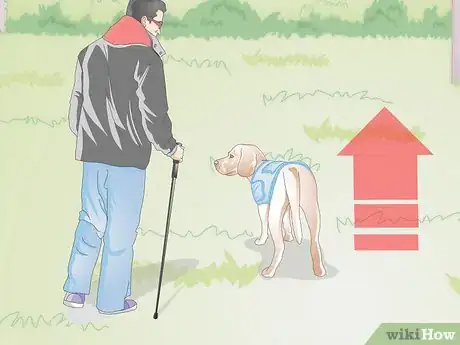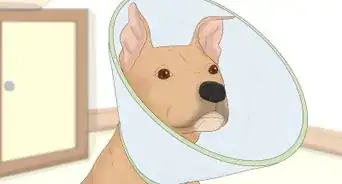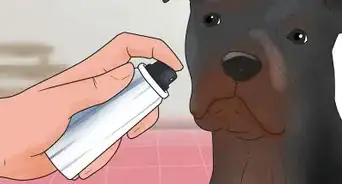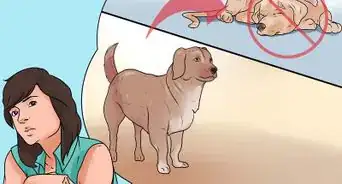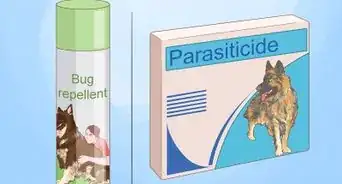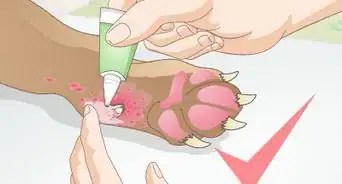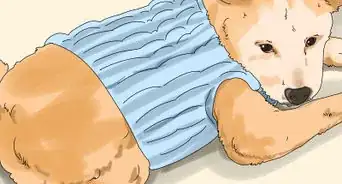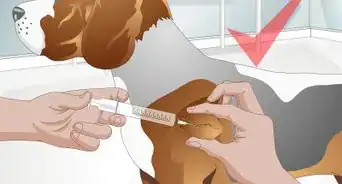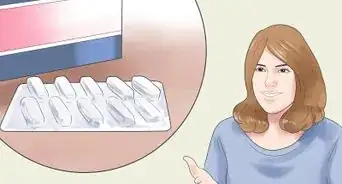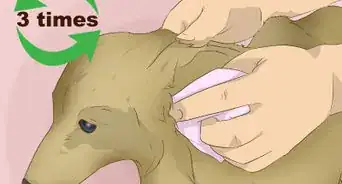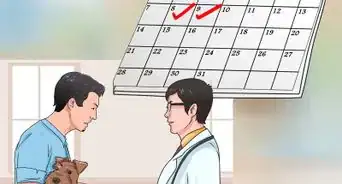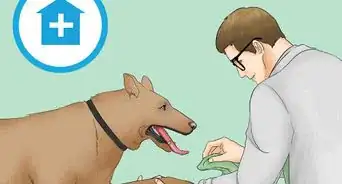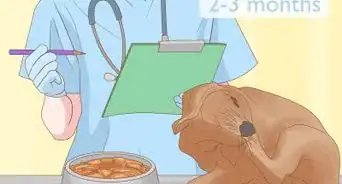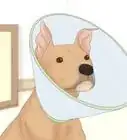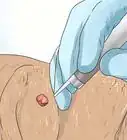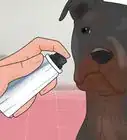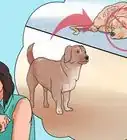This article was co-authored by Lauren Baker, DVM, PhD. Dr. Lauren Baker is a Veterinarian and Assistant Scientist at the University of Wisconsin-Madison. With over 10 years in veterinary medicine, she specializes in the concept of “one health,” which uses insights from veterinary medicine to help human medical research. She holds a Ph.D. in Comparative Biomedical Sciences, a Doctor of Veterinary Medicine, an MS in Comparative Biomedical Sciences, and a Bachelor’s degree in Psychology from the University of Wisconsin-Madison.
There are 11 references cited in this article, which can be found at the bottom of the page.
wikiHow marks an article as reader-approved once it receives enough positive feedback. In this case, 90% of readers who voted found the article helpful, earning it our reader-approved status.
This article has been viewed 308,189 times.
Paw pads protect dog's bodies by providing cushioning to protect bones and joints. They also provide insulation.[1] Since dogs are constantly on their feet, and often with little or no protection, paws are susceptible to tears and other injuries. Dogs with torn paw pads don't rest and allow them to heal, however. Rather, they continue to act like dogs, running and playing and reopening their wound over and over. Just the pressure from walking can cause torn paw pads to reopen.[2] Because this area of the body is prone to infection, it is important to care for your dog's torn paw pad in a timely manner.
Steps
Diagnosing and Assessing the Problem
-
1Look for signs of limping, licking, or bleeding. If your dog suddenly is unwilling to put any weight on a particular foot or is excessively licking it, odds are he has a paw pad injury.[3]
-
2Examine the paw immediately when you see signs of discomfort. Look all over the paw: between the toes, on top of the foot, and between the pads.[4] Check for bleeding, cuts or abrasions, debris stuck in the pad, or a dangling dew claw. Your dog may also have a ripped nail, which can cause a lot of bleeding.[5]
- Approach your dog cautiously, since he may be prone to snapping if he is in pain.
- Be gentle and talk in a soothing voice.
Advertisement -
3Decide whether a vet visit is in order. You can take care of a cut or torn paw at home if the wound is smaller than a half inch in diameter.[6] However, if the cut is deep, consult a vet. You should also consult a vet if there is excessive bleeding or oozing.
- While many vets do not stitch small cuts, they may give your dog antibiotics to help fight a possible infection.[7]
-
4Act quickly when you notice a potential problem. Paw injuries are susceptible to being contaminated by bacteria, so they must be treated immediately.[8]
Treating the Injury
-
1Clean the wound. Gently rinse the foot under lukewarm water, or fill a bucket with clean warm water and submerge the paw. Submerging the paw is helpful for washing out any debris that may be in the area. If necessary, you can use tweezers to remove any debris.[9]
-
2Stop the bleeding. If your dog's paw continues to bleed after you have removed any debris and washed the wound, use a clean bandage or cloth to apply light pressure to the area until the bleeding stops.[10] If you cannot control the bleeding after 5 minutes of continuous pressure, seek veterinary care.
- Lying the dog down and elevating the injured paw will help slow the bleeding.
-
3Dilute your disinfectant. You will need to apply an antiseptic like povidone-iodine (e.g., Betadine, Pyodine, and Wokadine) to kill any germs near the wound. Applying the antiseptic at full strength, however, can burn your dog's paw. Diluting to a solution of one part povidone-iodine to 10 parts warm water is suggested. It will appear to be the color of weak tea.[11]
-
4Apply the disinfectant. Once any blood and debris are removed and the wound has been cleaned, swab the area with a cotton ball saturated in the diluted povidone-iodine solution and allow the area to air dry.
-
5Cover the wound with antibacterial ointment. You can either use a salve designed for humans, such as bacitracin (e.g., Neosporin) or one developed specifically for dogs (Vetericyn). The antibacterial ointment will help prevent infection and is safe if your dog happens to lick it.[12]
-
6Place an absorbent pad on the wound. The first layer on the wound should be sterilized and nonstick. It should be large enough to cover the entire injury. Some good brands for non-adhering dressing pads include Telfa and Medtronic. You can find them at most pharmacies and some grocery stores or convenience stores.
-
7Wrap the injured paw and protect it from additional injury. Lightly wrap the absorbent pad and the foot pad with a self-adhering bandage designed for animals (such as Vertrap, Pet-Flex, or Pet Wrap). Leave the front toes out, and wrap the paw up to the wrist joint. The claws of the paw should be nearly touching. If the claws are separated or if the foot feels cold, you have tied the bandage too tight. Remove and try again.[13]
- This will not only protect the injury from being infected, it will also offer additional cushioning for the foot pad.
- Be sure the pressure is appropriate for your dog; you don't want to cut off his circulation. The wrapping should be snug enough that it stays on their foot but loose enough that you can place two fingers under the bandaging. Tying the bandage too tight can cut off the blood supply to the paw and may even cause limb death. Call your vet if you are worried about tying the bandage too tightly.
Supporting Your Dog's Recovery
-
1Change the bandage daily. Until your dog's paw is healed, you will need to replace the wound dressing each day, or more often if there is additional bleeding or seepage. Since dogs sweat from their paws, you will need to keep a close eye on the bandage to ensure it stays dry and clean.[14]
-
2Stop your dog from licking or chewing at the bandages. Dogs may try to lick or remove the gauze and bandage, and this will lengthen the time it takes for the wound to heal. Additionally, it could lead to infection. You can use a taste deterrent, such as bitter apple spray, on the outside of the bandages to dissuade your dog from licking or chewing on it.
- If the taste deterrent doesn't work, you may have to use an E-collar, the lampshade-shaped collar that restricts movement, for a few days.[15]
-
3Use a dog boot when going outside. Even though your dog is injured, he will still need to go out for a walk or potty break occasionally. To further protect your dog's paw and to keep the recovery on track, use a dog boot to cover the wound and bandages when going outside.
-
4Reassess the situation after a few days. If, after three days of treatment, the wound continues to bleed or opens up, take your dog to a veterinarian for further treatment.[16]
-
5Treat infection promptly. An infected paw can cause long-term problems if not treated quickly. During the healing process, look for swelling or redness in the paw pad, which may indicate an infection. When changing your dog's bandages, a foul odor or moist discharge could also be signs of an infection. Another sign of possible infection is if your dog suddenly seems to be in more pain or even refuses to walk. If any of these occur, consult your veterinarian immediately.[17]
Preventing Future Problems
-
1Inspect your dog's paws after being outdoors. After outdoor time, make sure no debris is lodged in the dog's paw that can cause problems or tears. Clean in between your dog's toes for pebbles, seeds, and other debris that can irritate and cut them. You can remove these with tweezers.[18] You can also have a bucket of water nearby to quickly rinse the dog's paws when he comes inside.[19]
- It is a good idea to be proactive regarding caring for your dog's paws. If you catch an issue early, it will be easier to treat.
-
2Keep your yard clean. Not all injuries can be avoided, but you can do some simple things to help keep your pet healthy. One is to check your yard for broken glass, small pebbles, or metal to make sure none of these can get lodged into your dog's paws. Preventing injuries is much easier than treating them.[20]
-
3Pay attention to the weather. Your dog's paws are sensitive to extreme weather conditions. Hot pavement can burn your dog's pads, and snow, ice, and salt can be equally damaging. When it's extremely hot outside, try to take your dog out before dawn or after sundown to avoid heat-related blisters or irritations on your dog's pads.[21] Dog boots or foot wax can help protect his paws in cold or snowy weather.
-
4[Moisturize Dog Paws|Moisturize your dog's pads]] to keep them in good condition. You can help keep your dog's pads healthy and strong by moisturizing them and preventing them from becoming cracked and dry. Be sure to use a pad moisturizer designed for dogs, as human products are not good for them. Your vet can recommend one.[22] Or, you can massage them with vitamin E.[23]
-
5Prevent overuse injuries. Just like human athletes, dogs need time to get their bodies used to a new fitness routine. If you take up hiking or running, gradually acclimate your dog and his paws to this new activity to prevent chafing or cracking.[24]
References
- ↑ http://pets.webmd.com/dogs/paw-care-tips-dogs
- ↑ http://www.dog-care-knowledge.com/dog-paw-problems.html
- ↑ https://www.cesarsway.com/dog-care/foot-wounds/foot-pad-injuries-in-dogs
- ↑ http://www.akcchf.org/canine-health/your-dogs-health/caring-for-your-dog/keeping-dogs-paws-healthy.html
- ↑ http://www.dog-care-knowledge.com/dog-paw-problems.html
- ↑ http://pets.webmd.com/dogs/paw-care-tips-dogs
- ↑ http://www.dog-care-knowledge.com/dog-paw-problems.html
- ↑ http://fidoseofreality.com/treat-feet-dog-paw-problems/
- ↑ https://www.cesarsway.com/dog-care/foot-wounds/foot-pad-injuries-in-dogs
- ↑ http://countrysidenetwork.com/daily/livestock/livestock-livestock/treating-dog-paw-pad-injury-vt/
- ↑ https://pethelpful.com/dogs/Using-Betadine-for-Dog-Wounds
- ↑ https://vcahospitals.com/know-your-pet/first-aid-for-torn-or-injured-foot-pads-in-dogs
- ↑ http://www.dog-care-knowledge.com/dog-paw-problems.html
- ↑ https://www.cesarsway.com/dog-care/foot-wounds/foot-pad-injuries-in-dogs
- ↑ http://countrysidenetwork.com/daily/livestock/livestock-livestock/treating-dog-paw-pad-injury-vt/
- ↑ http://www.vcahospitals.com/main/pet-health-information/article/animal-health/first-aid-for-torn-or-injured-foot-pads-in-dogs/11105
- ↑ https://www.cuteness.com/article/dog-paw-pad-infection
- ↑ http://pets.webmd.com/dogs/paw-care-tips-dogs
- ↑ http://fidoseofreality.com/treat-feet-dog-paw-problems/
- ↑ http://countrysidenetwork.com/daily/livestock/livestock-livestock/treating-dog-paw-pad-injury-vt/
- ↑ http://www.akcchf.org/canine-health/your-dogs-health/caring-for-your-dog/keeping-dogs-paws-healthy.html
- ↑ http://pets.webmd.com/dogs/paw-care-tips-dogs
- ↑ http://www.akcchf.org/canine-health/your-dogs-health/caring-for-your-dog/keeping-dogs-paws-healthy.html
- ↑ http://pets.webmd.com/dogs/paw-care-tips-dogs
About This Article
To care for a dog’s torn paw pad, make sure to take it to the vet if the wound is larger than 1/2 inch in diameter. For smaller injuries, immediately rinse your dog’s paw with lukewarm water to flush out any debris and clean the wound. Next, apply a diluted disinfectant, like Betadine, to the cut with a cotton ball and cover the area with antibacterial ointment. Then, place an absorbent pad on the cut, secure it to your dog's paw with a self-adhering bandage, and change the bandage once a day until the wound has healed. For tips from our Veterinary co-author on how to protect your dog’s paws from cuts and scrapes while it’s outdoors, read on!
